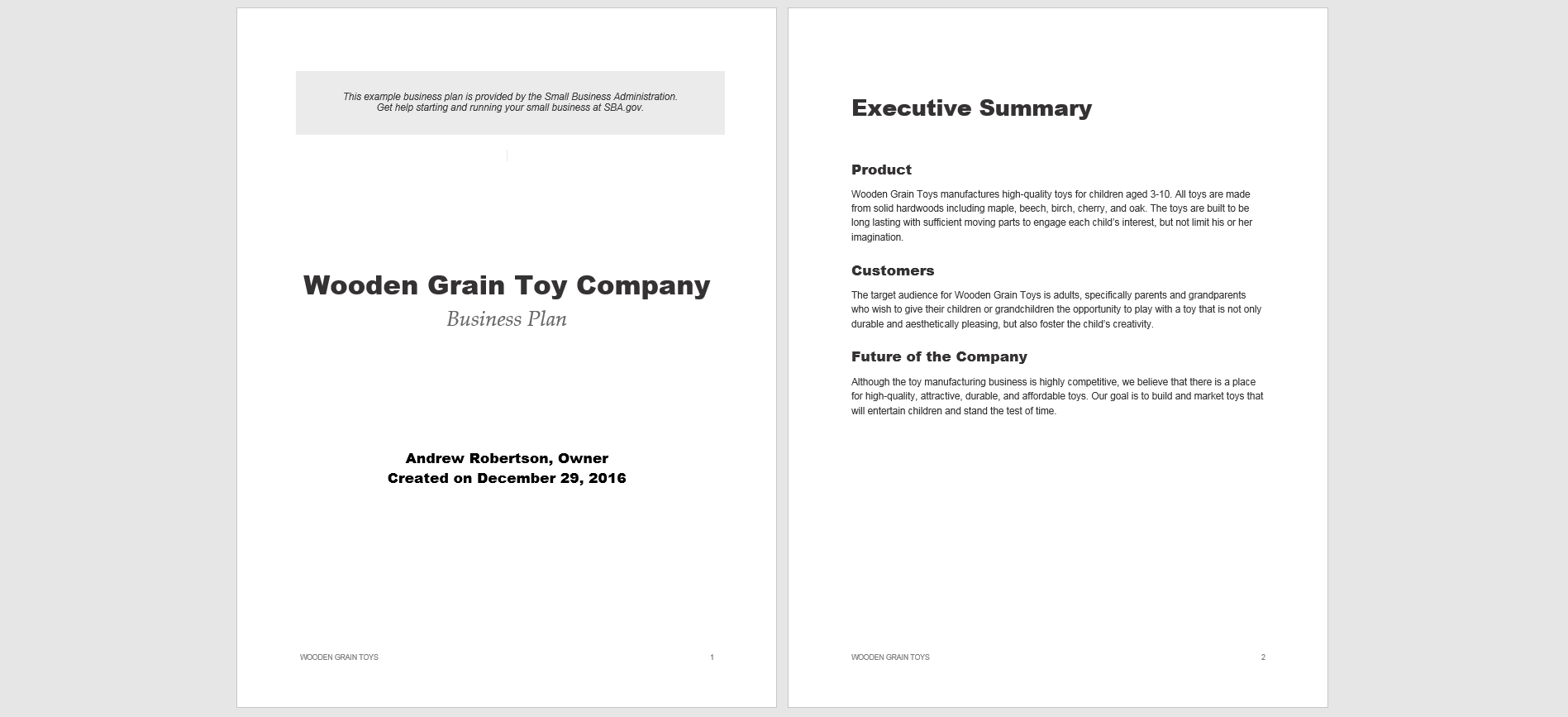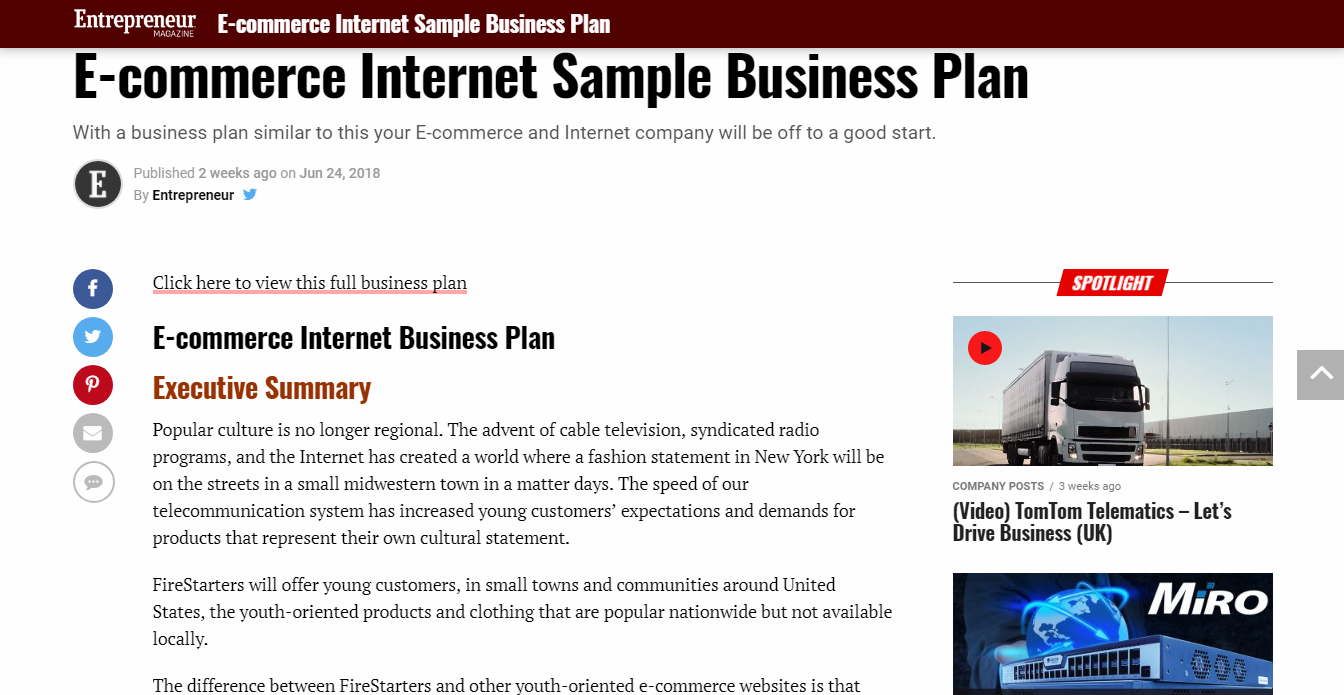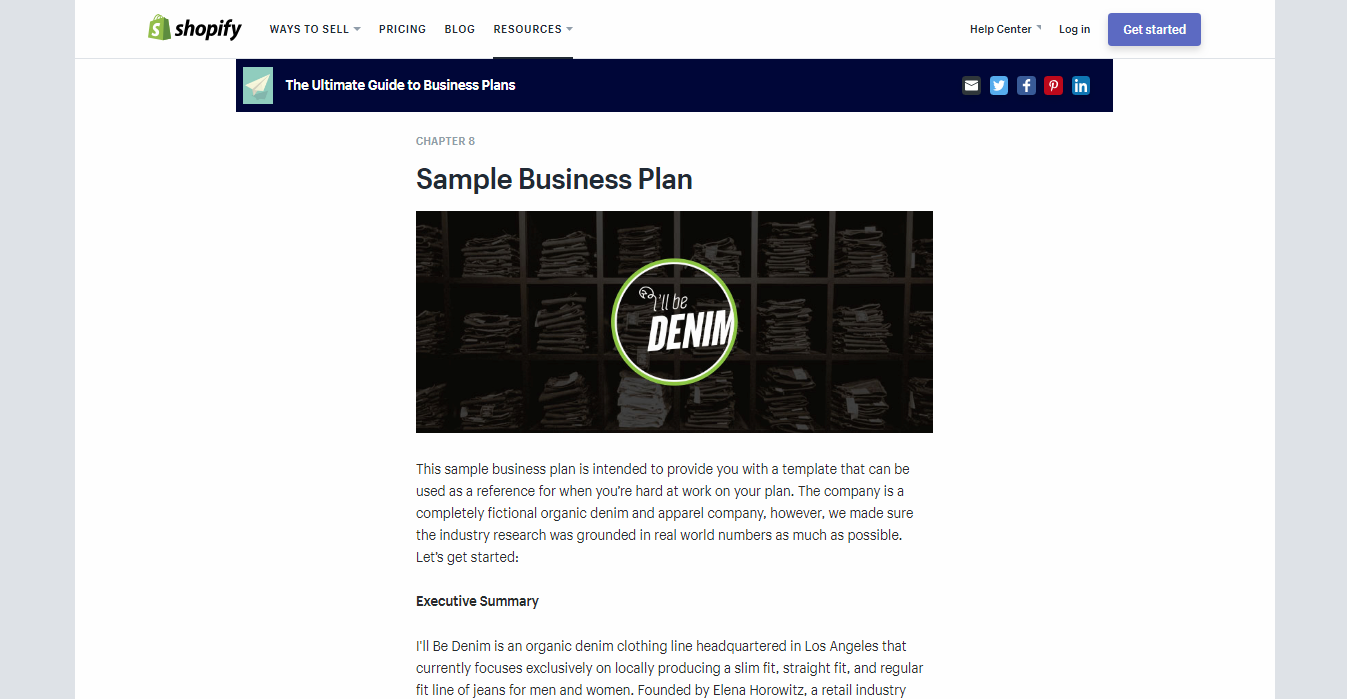You need a business plan.
This is the document used to navigate your entrepreneurial future.
You’ll operate aimlessly without one.
This article explains how to write a business plan.
It details the process in an easy-to-understand, step-by-step process. It also includes a handful of business plan examples and templates to get it done today.
We’re skipping over the boring stuff.
Ready? Let’s start.
What You Need to Know about Business Plans
A business plan should be only as long as it needs to be:
- 1 – 2 pages or 10 – 20 pages per depth
- Visuals for data when appropriate
- Professional layout and design
Your business plan usually forms before you lay the foundation though it’s not uncommon to hash it out once you’ve launched. Your plan guides your direction so having it early on can align goals and efforts.
The main things you intend to answer when writing a business plan are:
- What makes your business and its offers unique
- How your offer solves a problem, need, or want
- Where and how you intend to get it in front of an audience
- How things will operate and its structure
You also want this document ready for:
- Pitching the business for funding and capital
- Plotting the industry, trends, and adoption cycle
- Predicting business investments/expenses and growth
The business plan becomes your pitch and holy grail. It outlines the business’s potential while reassuring you, future employees, and investors what they’re getting into.
Another reason? You statistically increase your odds of succeeding when having a business plan.
Every plan befits its’ business – there are traditional and non-traditional plans you can create.
How to Write a Traditional Business Plan: Step-by-Step
A traditional business plan’s parts are extensive and almost tedious – which is probably why so many entrepreneurs skip writing them or opt for non-traditional outlines (see below).
However, you’ll want to follow through with this longer format if you want to cover everything as a robust guide and presentable item for investors.
Step 1: Write the Executive Summary
The executive summary is an overview of your business comprised of your mission, company info, leadership roles, basic operations, and what you offer.
Think of this as your business plan’s cover letter typically created once you’ve done the other, focused parts.
Step 2: Write the Business Description
The business description is a breakdown of the business details including:
- Business name
- Location & contact
- Targeted audience
Basically, anything important about the business to help you and others understand the ‘what’, ‘why’, and ‘how’ of its operations.
It’s a bit like the executive summary but focused on the business entity.
Step 3: Write the Market Strategies
The market strategies cover how you’ll reach your intended audiences and targeted markets.
This section would include what marketing strategies like:
- Traditional advertising avenues
- Social media marketing
- Outreach efforts
- Pay-per-click and online ad platforms
…and any others you have in mind as you write the business plan.
Step 4: Write the Competitive Analysis
Include your competitor analysis to gauge how you intend to compete with other reputable brands in your market.
This should include information ranking your competitors and how they’re performing.
Think of this section as helping you and investors get to know the industry.
You may have a general idea of who you’re up against, but that may not be the case for others. This gives a snapshot so future employees and investors know the challenges ahead.
Step 5: Write the Design & Development
The design & development section revolves around how the business is structured – including:
- Its legal structure
- Its products and/or services
See this section as an outline or blueprint of how you’ll set up the legal entity. This could be a sole proprietorship all the way up to a corporation. You’ll also want to include details about impending copyright for inventions and materials unique to its operations.
Step 6: Write the Operations & Management
A section detailing the business’s organization will help you and financiers know who’s in charge.
Detail items like:
- Who’s running the company
- Who are the managers
- Who holds the main employee roles
- Who has more ‘say’ on important matters
You can use this section to break down the ownership of the company.
Step 7: Write the Financial Data
Your final bit covers items like:
- Funding requests
- Financial projections
This section opens the books giving investors a complete overview of the business operational profits and expenses. We recommend reading through INC’s guide to making financial projections to fully understand how to crunch the numbers.
Step 8: Write the Appendix
The appendix is where you’ll ‘data dump’ all the extra of your business and plans. This area is for items like market research and product examples. The section could include the legal documents, too.
—
Now, obviously, this doesn’t cover every little detail of what goes into writing a business plan. But, it should provide basic guidance of its formation. Refer to the SBA.gov site for larger summaries and walkthroughs of the main sections if need be.
How to Write a Non-Traditional Business Plan: Step-by-Step
A non-traditional business plan – aka the ‘Single Page Business Plan’ or ‘Lean Startup Plan’ – is the new norm because so many businesses aim for lean/agile organization & operations.
A one-page business plan cuts the fluff and creates a generalized outline. Compare this to covering every small detail. The benefit of the one-page plan is its open interpretation and flexibility while your business morphs during its early years.
Note: Restrict yourself to 1 – 2 sentences when answering the following sections for the one-page business plan as this keeps it short and to-the-point.
The Goal of a One-Page Business Plan
The lean startup plan doesn’t intend to answer every little detail about the operations. Instead, it sets up a framework of everything happening after the business formation. Think of this almost like a sales pitch to yourself, future employees, and potential investors.
The one-page plan usually works more off what’s happening right this minute vs trying to take a stab at where the market and business is going in the next 5, 10, 20+ years.
Writing the One-Page Plan
Items usually included in the non-traditional business plan include answers to:
- What is your product and who is it for?
- What problem or need does your product solve?
- Who is your competition and what makes you different?
- What is your goal/vision for the business?
- How much will you charge for your product and/or service?
- How will you get people interested in it (e.g. marketing)?
- What are your main challenges and how will you overcome them?
- What is your basic roadmap for the next few months?
Keeping the business plan to one-page forces your creativity while cutting the fluff. This gets down to the basics – what really needs to be done. The one-page plan is perfect for those creating startups fueled by passion and vision.
Business Plan Examples: Simple, Complex, and More
We, like we’d imagine a lot of you, tend to learn better through visuals. And, having something to work alongside – examples, that is. We’ve gone ahead and collected a mix of business plan examples covering everything from simple startups to complex organizations. Plus, a couple for industry-specific.
The following is a business plan example directly from the SBA.gov website:

See and download it via SBA: https://www.sba.gov/sites/default/files/2017-11/Sample%20Business%20Plan%20-%20Wooden%20Grain%20Toy%20Company.doc
The Entrepreneurmag.co.za website lists many sample business plans on their site:

See and work along with them here: https://www.entrepreneurmag.co.za/category/advice/sample-business-plans/
Ever wanted to see what Netflix’s business plan looks like?
Shopify shares a fantastically detailed traditional business plan example:

Check it out here: https://www.shopify.com/guides/businessplan/sample-business-plan
Here’s one more Slideshare presentation we found insightful:
—
There are thousands of these business plan examples across the Web. Do yourself a favor and dig around Google seeing what pops up. Or, ask fellow entrepreneurs if they’d share their business plan to use as an example and guide.
Business Plan Templates and Resources
We’ve covered a lot, so far, but we also know you’re itching to write a business plan to get things started today.
The sooner the better, right? In this case, templates and resources are in order.
Business Plan Software and Apps
Business plan software and apps make quick work of writing your plans.
Here are some we found:
- LivePlan – LivePlan includes an easy-to-use walkthrough for creating business plans. This is done all online with guided help and resources. Basic packages start at $19.95/mo.
- Business Sorter – Business Sorter prioritizes the main items when creating a business plan. The tool includes a SWOT analysis and card-based system to create and sort objectives. The basic package costs $10 a month.
- BizPlan – BizPlan is an all-encompassing tool letting you create business plans using a guided tool with drag-and-drop features. This generates a beautiful, easy-to-understand plan starting at $19/mo for its starter package.
- net – Template.net offers thousands of free and premium templates for everything you’d want. This includes hundreds of business plan templates for Word. Typical pricing for a professional template is around $30+.
Overall, we’d recommend LivePlan out of the bunch for its extensive online and sharing features. And, overall user experience for someone not wanting something overly technical.
Business Plan Word and PDF Templates
Looking for a few business plan word templates? Or, PDFs?
Try these resources:
- Microsoft Office’s business plan templates (here)
- The $100 Startup one-page business plan (here)
- RocketLawyer’s state-by-step plan templates (here)
- Bplans’ business plan template (here)
- Score’s startup business plan template (here)
We want you to just start rather than sort through hundreds of these things. You’re more than welcome to do a Google search for more. But, time is ticking and any of these four will do the trick.
Do You Need a Business Plan? Is It a Waste of Time? Thoughts and Actions
Do a search for these two and you’ll get conflicting articles and suggestions.
Which is it?
We opt for writing a business plan – because:
- Shorter, non-traditional plans come together in an afternoon
- They provide an outline and guide for your business growth
- Many institutions want to see them if you need business capital
We shared step-by-steps, templates, and resources.
What more could you want?
Do this and get it out of the way:
- Decide which business plan type works best for your idea
- Download and work through a template with a sample as inspiration
- Review it, pass it around, and get it set in stone
Congratulations! You’re now one step closer to starting a business!




